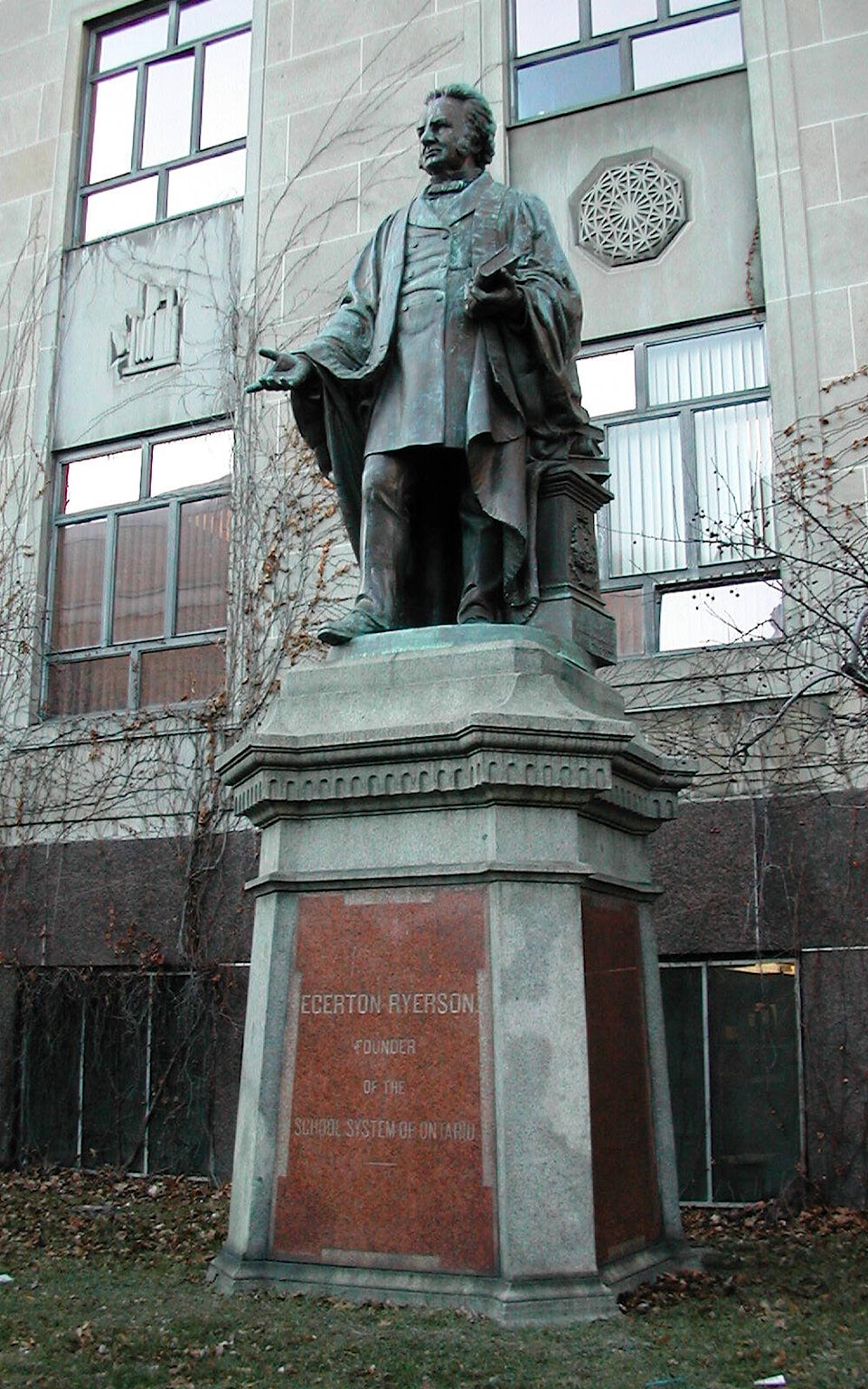The statue of Egerton Ryerson was a campus landmark at the school that once bore his name.
I remember this statue when I was a journalism student at Ryerson Polytechnical Institute. At the time, it was simply a feature of the downtown Toronto campus, and it had been there since around the time the school had opened its doors in 1948.
Today, the statue is gone and while the campus remains, the school is now known as Toronto Metropolitan University. Ryerson鈥檚 name was removed at the end of this past school year.
The changes are a response to the atrocities committed by Canada鈥檚 residential school system.
READ ALSO:
READ ALSO:
Ryerson, a 19th-century Canadian educator, was influential in creating the residential school system. These schools operated from the 1870s until the last one closed in 1996. An estimated 150,000 Indigenous, Inuit and Metis children were taken from their families and placed in these schools.
Since 2017, there have been calls to re-evaluate the school鈥檚 connection to the Ryerson name. In 2018, a plaque was set up beside the statue of Ryerson describing the role he had played in the residential school system.
The efforts to remove the school鈥檚 connection to the Ryerson name intensified in 2021, following the discovery of 215 unmarked graves at the site of a former residential school in Kamloops, followed by discoveries of other unmarked graves at other residential schools across Canada. Today, the number of unmarked graves of former Indigenous residential school students numbers into the thousands.
In addition, the residential school system has had long-lasting effects on Indigenous communities across the country.
Many in this country are still coming to terms with the mistreatment of Indigenous people by the church-run residential schools. Removing the statue and renaming the school are steps in acknowledging the damage caused by Ryerson鈥檚 residential school concept.
In the months leading up to the school鈥檚 name change, a significant number of faculty, staff and students at the university had taken to referring to the school as X University, as a way of rejecting the Ryerson name. In June 2021, the statue was toppled and defaced, and the severed head was thrown into the Toronto Harbour.
Ryerson is remembered today for his role in the residential school system, but he also left another mark on Canada鈥檚 education system, this one much more positive.
He worked to standardize the education system in Canada and he created the system of free public schooling we have today. He advocated for these developments as early as 1846, and without them, Canada would not be what it is today.
The removal of the statue and the university鈥檚 new name does not erase Ryerson鈥檚 mixed legacy. Instead, these changes reflect a different way of viewing a historical figure whose legacy was far from perfect.
Statues are erected as a way of bestowing honour on a person who has made a significant contribution to the country. They suggest the person is held in high esteem and worthy of great respect. The same holds true when a building or an institution is named after a person.
However, when new information shows a hero鈥檚 image is tarnished, it is time to reconsider whether to continue with the show of honour.
Anyone who wants to learn about Ryerson and his accomplishments is able to do so. There are books, magazine articles and scholarly studies about him and about other figures.
Removing the statue and renaming the university are tangible ways to acknowledge that a once revered educator is no longer deserving of the honour he was once shown.
John Arendt is the editor of the Summerland Review.
To report a typo, email:
news@summerlandreview.com.
news@summerlandreview.com
Like us on and follow us on .



